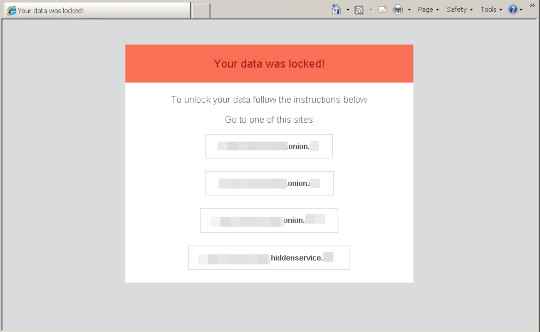Ransom.Win32.TUSIKSLOCK.B
Ransom:Win32/Dotranos (MICROSOFT)
Windows


Threat Type: Ransomware
Destructiveness: No
Encrypted:
In the wild: Yes
OVERVIEW
This Ransomware arrives on a system as a file dropped by other malware or as a file downloaded unknowingly by users when visiting malicious sites.
It drops files as ransom note.
TECHNICAL DETAILS
Arrival Details
This Ransomware arrives on a system as a file dropped by other malware or as a file downloaded unknowingly by users when visiting malicious sites.
Installation
This Ransomware adds the following mutexes to ensure that only one of its copies runs at any one time:
- e40cb2b8c27a9ef5dd2677cf30462e6148418a1fbb1e292998554bdf1ae6064e
Other Details
This Ransomware encrypts files with the following extensions:
- .txt
- .exe
- .jpg
- .zip
- .rar
- .png
- .bat
- .py
- .pyc
- .pl
- .7z
- .iso
- .avi
- .key
- .md
- .bin
- .ini
- .conf
- .mp3
- .mp4
- .c
It does the following:
- It encrypts files from local drives, removable drives, and network shares.
- It deletes shadow copies using the following commands:
- /C vssadmin delete shadows /all /quiet
- /C bcdedit /set {default} recoveryenabled no
- It disables Startup Repair from running using the following command:
- /bcedit /set {default} recoveryenabled No
- It disables or turns off Windows Error Recovery Screen on Startup using the following command:
- /bcdedit /set bootstatuspolicy ignoreallfailures
It does not proceed to its malicious routine if it detects that it is being debugged.
Ransomware Routine
This Ransomware appends the following extension to the file name of the encrypted files:
- .locked-{3 Random Characters}
It drops the following file(s) as ransom note:
- %User Temp%\ReadMe-{3 Random Characters}.html
- {Encrypted file path}\ReadMe-{3 Random Characters}.html
- {Drive letter}:\ReadMe-{3 Random Characters}.html

SOLUTION
Step 1
Before doing any scans, Windows 7, Windows 8, Windows 8.1, and Windows 10 users must disable System Restore to allow full scanning of their computers.
Step 2
Note that not all files, folders, and registry keys and entries are installed on your computer during this malware's/spyware's/grayware's execution. This may be due to incomplete installation or other operating system conditions. If you do not find the same files/folders/registry information, please proceed to the next step.
Step 3
Restart in Safe Mode
Step 4
Search and delete these files
- %User Temp%\ReadMe-{3 Random Characters}.html
- {Encrypted file path}\ReadMe-{3 Random Characters}.html
- {Drive letter}:\ReadMe-{3 Random Characters}.html
Step 5
Restart in normal mode and scan your computer with your Trend Micro product for files detected as Ransom.Win32.TUSIKSLOCK.B. If the detected files have already been cleaned, deleted, or quarantined by your Trend Micro product, no further step is required. You may opt to simply delete the quarantined files. Please check this Knowledge Base page for more information.
Step 6
Restore encrypted files from backup.
Did this description help? Tell us how we did.


